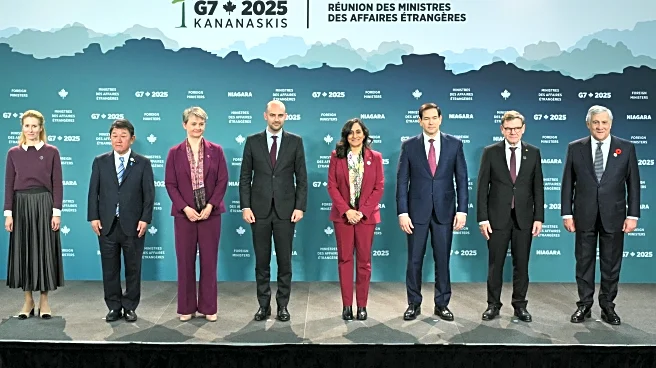What's Happening?
Ghana has received over 130 gold and bronze artefacts from Britain and South Africa, marking a significant repatriation of cultural heritage. The artefacts, taken between the 1870s and early 20th century,
include royal regalia, drums, and ceremonial gold weights. The Asante king, Otumfuo Osei Tutu II, received the items at the Manhyia Palace Museum in Kumasi. The repatriation was facilitated by AngloGold Ashanti, a South African mining company, and included contributions from the Barbier-Mueller Museum in Geneva and British art historian Hermione Waterfield. The artefacts depict governance systems, spiritual beliefs, and the role of gold in Asante society.
Why It's Important?
The return of these artefacts is a significant step in addressing historical injustices related to colonialism and cultural appropriation. It highlights the growing movement for the repatriation of cultural heritage, which seeks to restore dignity and identity to communities affected by colonial exploitation. The repatriation strengthens Ghana's cultural heritage and provides an opportunity for education and preservation of its history. It also sets a precedent for other countries and institutions to follow, promoting international cooperation and reconciliation.
What's Next?
The successful repatriation may encourage further efforts to return cultural artefacts to their countries of origin. Ghana and other nations may continue to advocate for the return of items held in foreign museums and collections. This could lead to increased dialogue and collaboration between countries and cultural institutions, fostering mutual understanding and respect for cultural heritage.
Beyond the Headlines
The repatriation of artefacts to Ghana underscores the ethical considerations surrounding cultural heritage and the responsibilities of museums and collectors. It raises questions about the ownership and stewardship of cultural items and the role of institutions in preserving and sharing history. The movement for repatriation may influence global cultural policies and practices, encouraging more inclusive and respectful approaches to heritage management.













